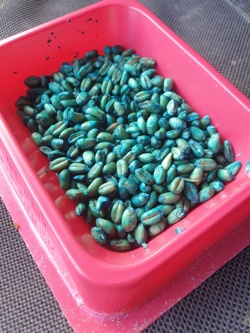News
Tools of the trade - Rodenticides

While only used on rare occasions nowadays anticoagulant rodenticides are a class of pesticides designed to control rodent populations by interfering with their blood clotting mechanisms. These chemicals work by inhibiting the production of vitamin K, a necessary component in the production of blood-clotting proteins.
The development of anticoagulant rodenticides began in the 1940s, with the introduction of the first-generation compounds such as warfarin and diphacinone. These early compounds had relatively low toxicity and required multiple feedings to achieve a lethal dose, which made them less effective and less popular among pest control professionals.
In the 1970s, second-generation anticoagulant rodenticides such as brodifacoum and bromadiolone were developed. These compounds had higher potency and longer lasting effects, meaning that they could be used at lower concentrations and required fewer applications.
The introduction of second-generation anticoagulant rodenticides led to a dramatic increase in their use and popularity in the pest control industry. However, these chemicals also raised concerns about their potential impact on non-target species, particularly raptors and other predators that feed on contaminated rodents.
In recent years, there has been renewed interest in developing alternative methods for rodent control, including non-toxic and eco-friendly approaches such as integrated pest management (IPM) and biological control. However, anticoagulant rodenticides continue to be widely used in many parts of the world as a key tool for controlling rodent populations and preventing the spread of disease.


